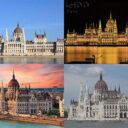On March 21, a unique exhibit titled “Habitat. Nature and Landscape Constructions” (Élőhely. Természet- és tájkonstrukciók) opens, delving into our changing perceptions of nature from the late 19th century to today. Using everything from paintings and graphic art to sculptures, photo series, documentation, and videos, the show explores how people throughout different eras have related to the natural world—and how those attitudes are reflected in art.
Nature and Culture: Redefining Boundaries
This wide-ranging display puts the ongoing ecological crisis into a broader perspective. It asks whether, against a backdrop of 19th-century landscapes and today’s environmental anxieties, we might redefine the tangled relationship between nature and culture. The complex connections between the environment and urban life take center stage here, as well as how artistic responses have evolved over two centuries.
Art Reflects and Challenges Our Responsibility
The exhibit spotlights the evolution in our understanding of nature, especially as the industrial and agricultural revolutions redefined what “nature” means and how industrialization shifted our relationship to the land. Modern works bear the mark of technology and contemporary trends, urging visitors to confront their own roles and responsibilities in shaping humanity’s future.
Masters and Pioneers Join New Voices
Works by such historical giants as László Mednyánszky (Mednyánszky László) and Gustave Courbet stand alongside Alan Sonfist, a pioneer of 1970s ecological art, and creators from the Workshop of Pécs (Pécsi Műhely). Their pieces engage in a dialogue with contemporary Hungarian artists like Tamás Dezső (Dezső Tamás), Kitti Gosztola (Gosztola Kitti), András László Hatházi (Hatházi László András), and others, offering a rich, provocative mosaic for anyone curious about the future of art and the planet.





